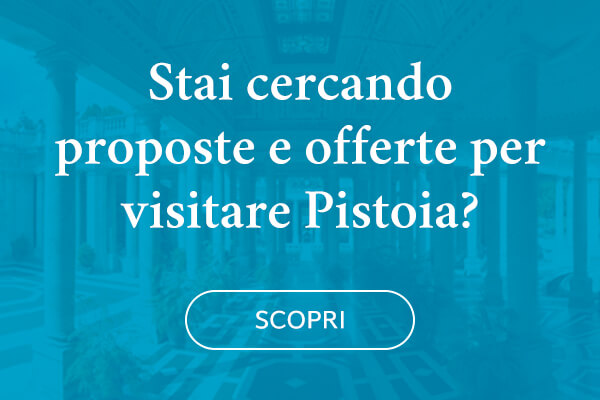Piazza Duomo, sightseeing the city centre

Pistoia’s history lives in its streets. Walking along Via Cino da Pistoia which opens out onto Piazza Gavinana, a series of streets form a ring around the centre of the town. As you stroll along Via Cavour you get a glimpse to your right of the Church of San Giovanni Forcivitas thus named because when it was built it was ‘outside the town’ or rather external to the first ring of town walls. The church looks out onto Via Cavour with its beautiful marble lateral wall and two coloured stripes. Within it there are beautiful works of art to admire: the holy water font (Giovanni Pisano), the pulpit (Frà Guglielmo da Pisa, a pupil of Nicola Pisano), paintings (Taddeo Gaddi) and the terracotta group (School of Della Robbia).
A little further on, if you deviate briefly into Via Roma, on the left is La Sala, an ancient square already extant in Lombard times and originally intended for meat and fish trading, which isnow the site of a lively daily fruit and vegetables market whose many bars transform it by night into the town’s living room. A short distance away is the atmospheric Piazza del Duomo, a splendid complex of medieval buildings which was once the hub of political, judicial and religious power.
These buildings perform these same functions today. With the imposing bulk of the Torre Campanaria, the Baptistery – an architectural jewel with a black and white marble facade – and the Palazzo del Comune alongside it and Palazzo del Pretorio and historic Palazzo dei Vescovi – now a museum – in front of it, the Duomo was built in the fifth century. Under the central arch of its portico is some beautiful glazed terracotta work by Andrea Della Robbia who was also responsible for the lunette with the Madonna degli Angeli which dominates the central door. The interior is graced with the famous Altare Argenteo di San Jacopo, a gold working masterpiece made by Pistoia, Sienese and Florentine artists. As well as funerary work in honour of its eminent citizens, Pistoia’s Duomo holds a number of paintings including a Madonna in trono fra due Santi by Andrea del Verrocchio and Lorenzo di Credi and sculptures such as Benedetto da Maiano’s baptismal font.
In front of the Duomo and slightly higher than it, is the battistero di San Giovanni in Corte with a central plan and an octagonal base with a white and green marble facade. Palazzo Pretorio, next to the Baptistery, is the current seat of the law courts and its medieval appearance is the result of renovation work carried out in the mid nineteenth century. On the opposite side of the square is the Palazzo del Comune built in the fourteenth century. As well as vast and richly decorated halls, it also contains the Civic Museum with a valuable collection of sculptures, weaponry and medals in addition to various Pistoia school paintings.
< Comeback to the article list


